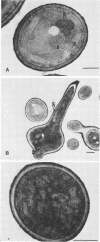Abstract
Cerulenin, an inhibitor of fatty acid biosynthesis, has been used to study the role of the plasma membrane in germination of Candida albicans. To further elucidate this association, spontaneous, cerulenin-resistant mutants of C. albicans were isolated. Two of the mutants, 4918-2 and 4918-10, were compared biochemically with wild-type cells (4918). All strains grew equally well at 37 degrees C and synthesized fatty acids at comparable rates in the absence of the drug. In the presence of cerulenin, wild-type cells did not proceed through a logarithmic growth stage and exhibited a significantly impaired ability to incorporate [3H]acetate into newly synthesized lipid material. All strains were examined ultrastructurally. Alterations were observed in the membranous structures of cerulenin-treated wild-type cells. Such changes were not observed in cerulenin-treated mutant strains. Further examination of mutant strains revealed differences in cell wall protein and polysaccharide compositions when compared with those of wild-type cells. These apparent alterations in cell surface components may be correlated with the reduced abilities of mutant strains to adhere, in vitro, to mammalian cells.
Full text
PDF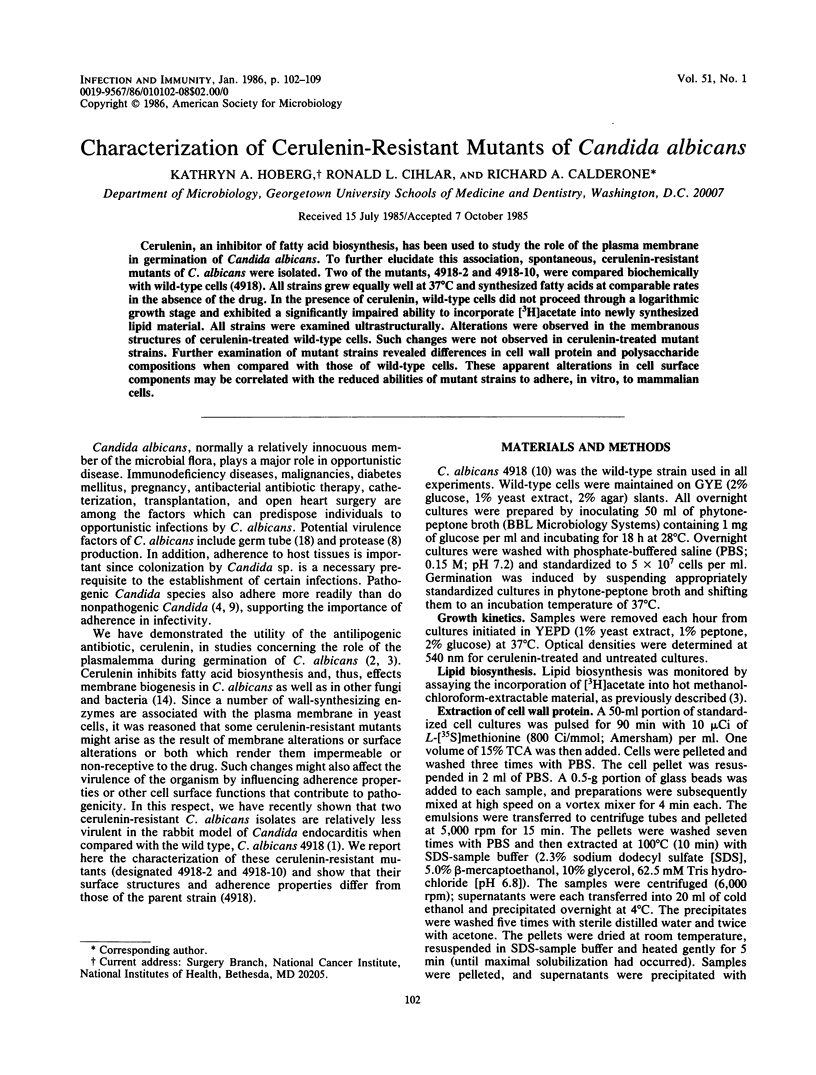
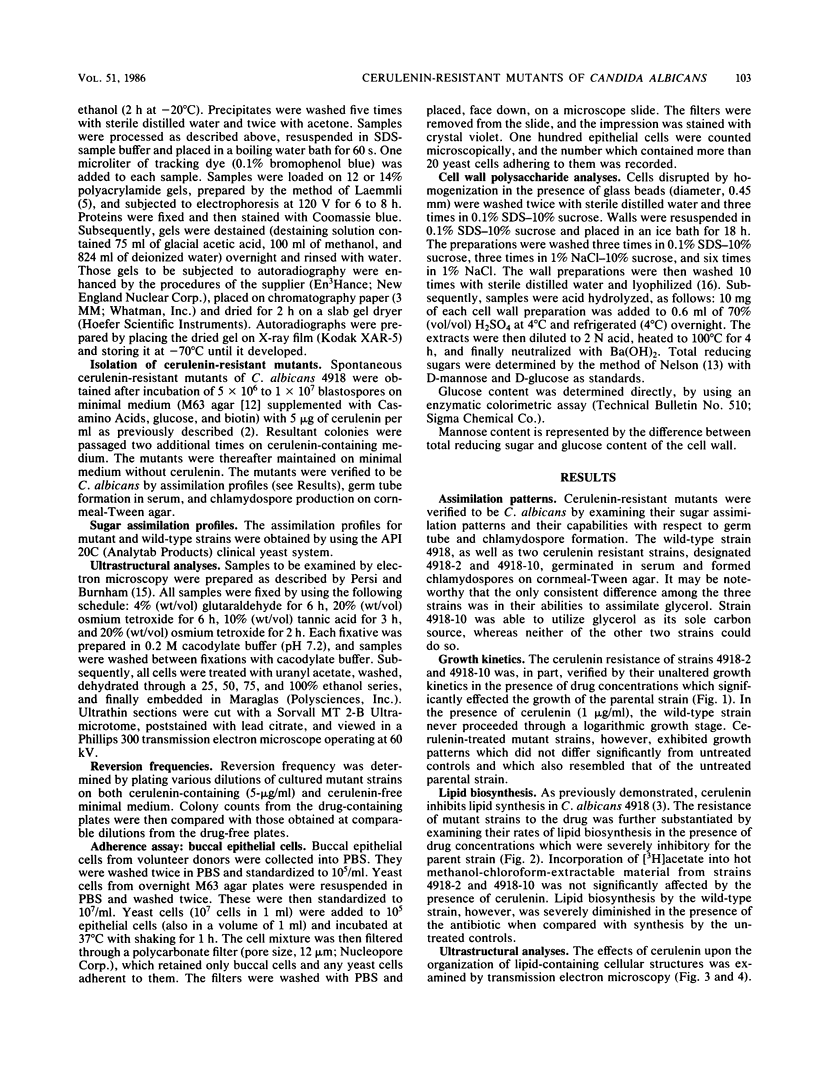
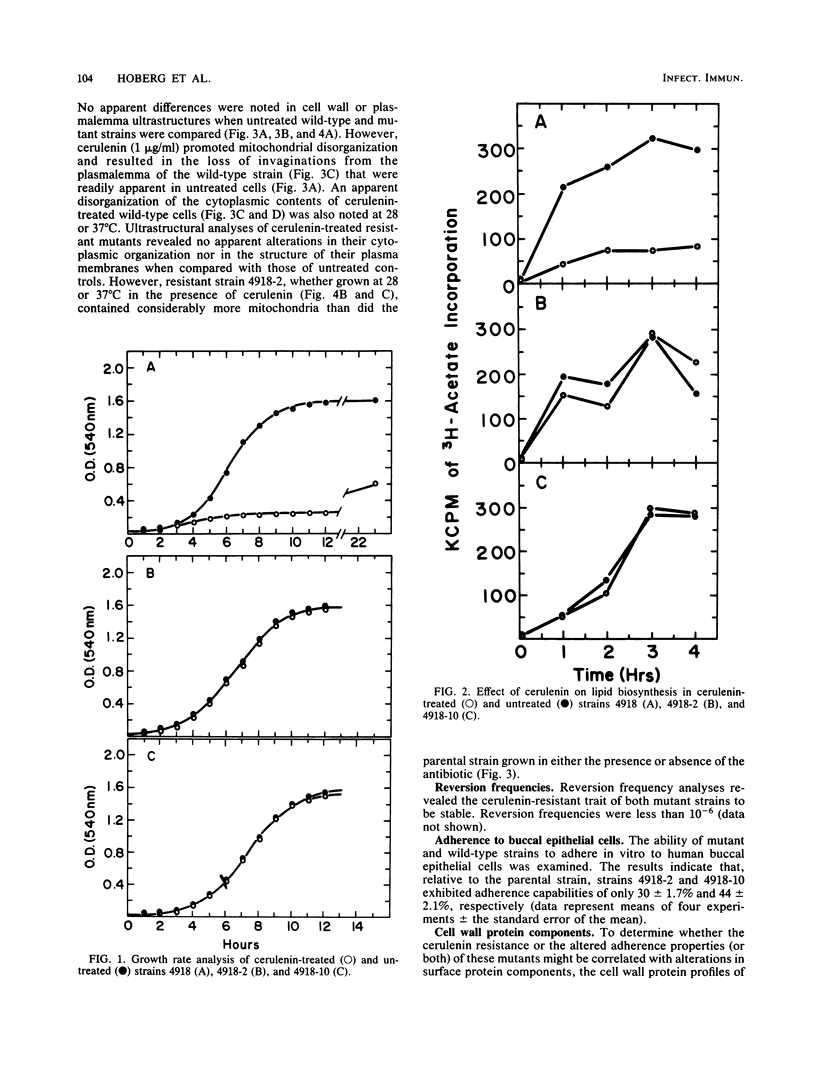
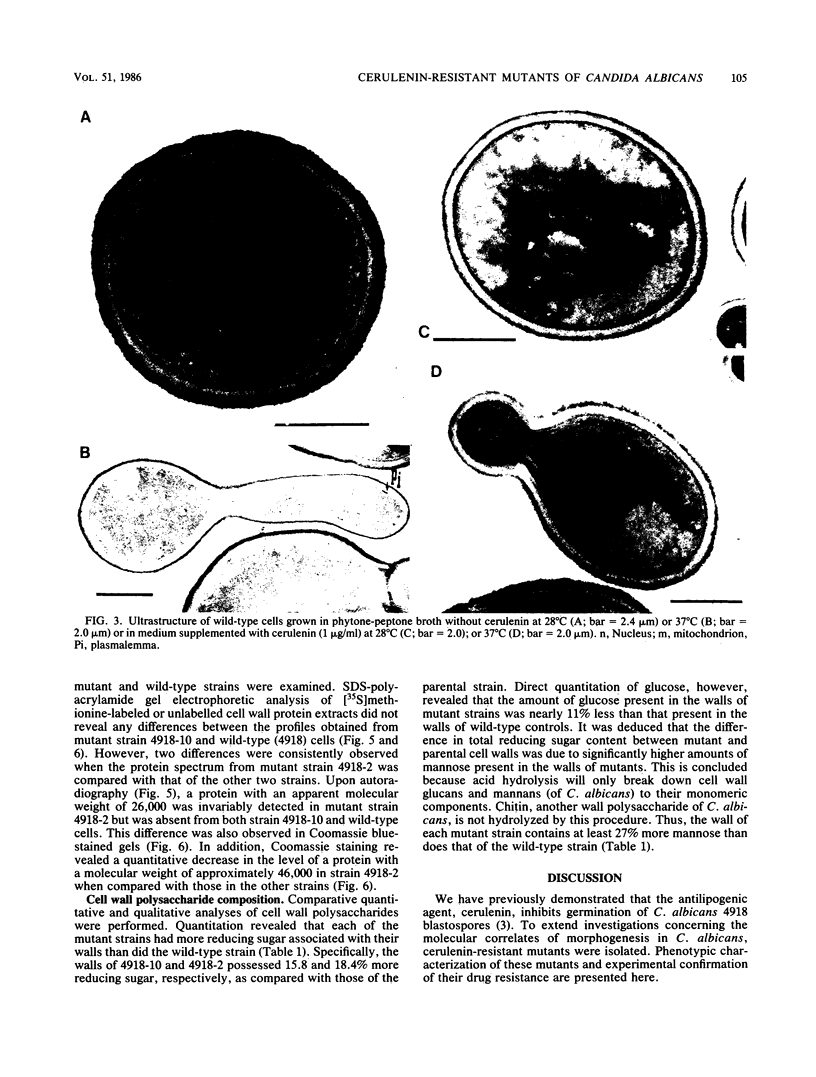
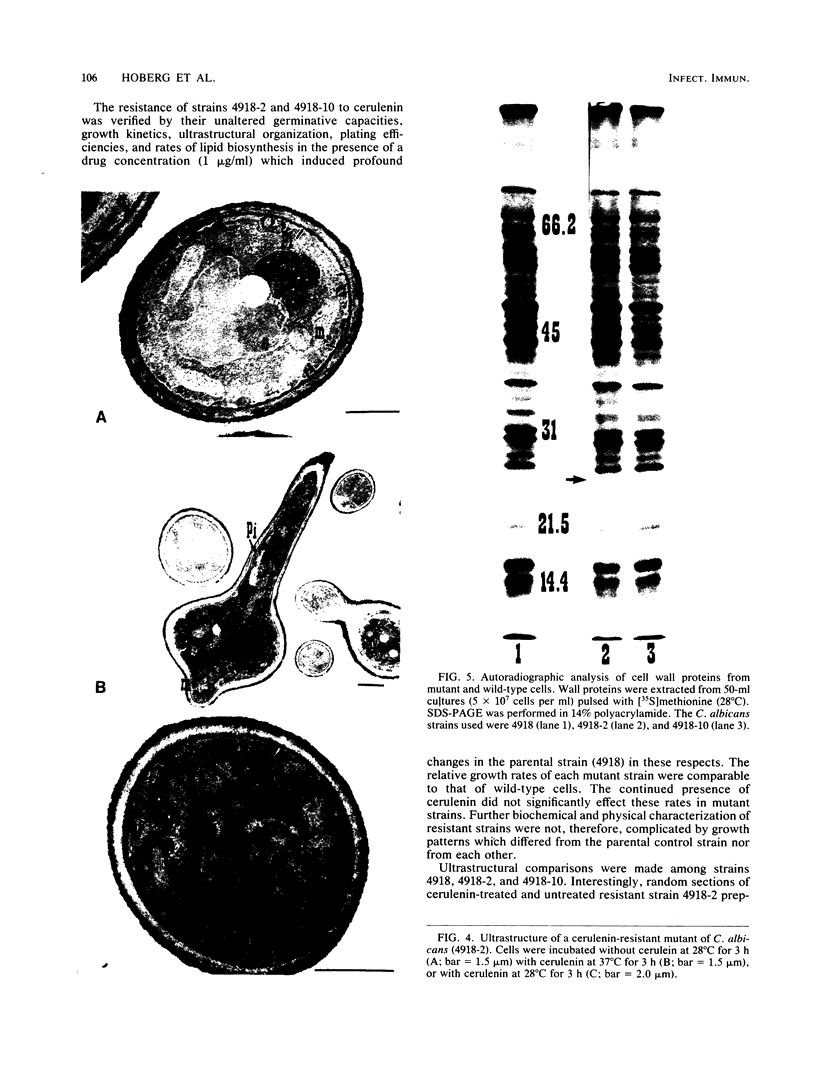
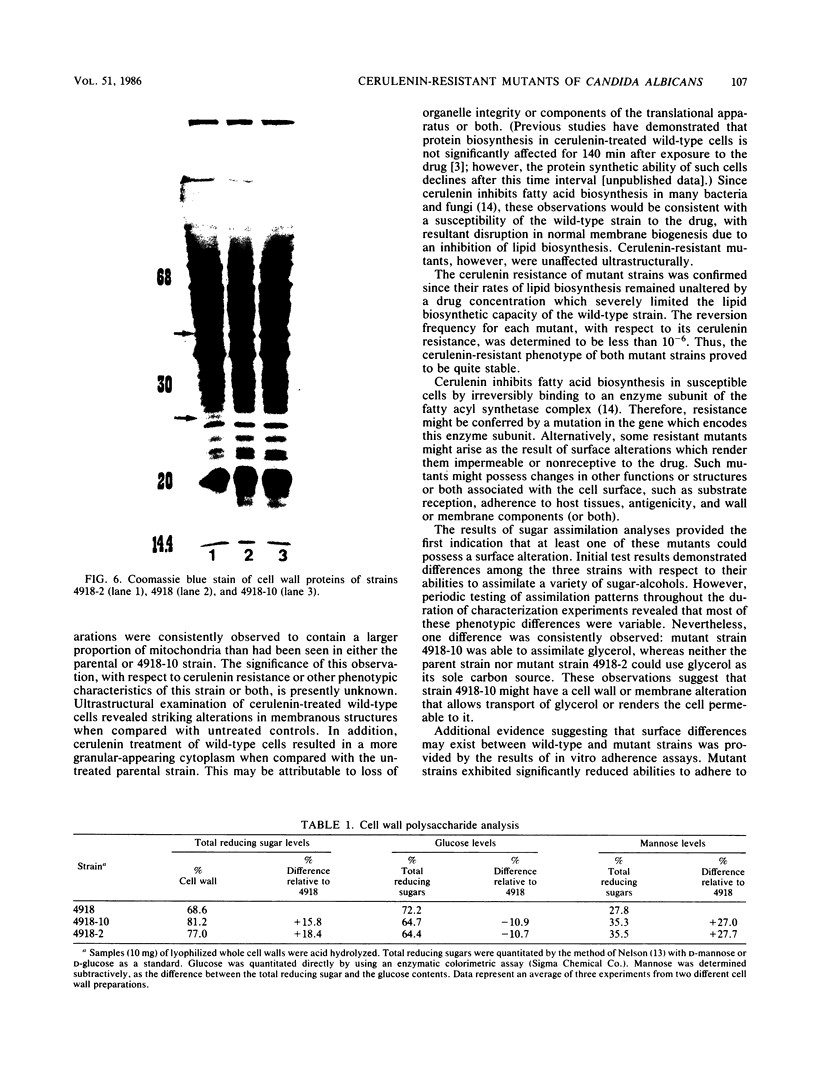
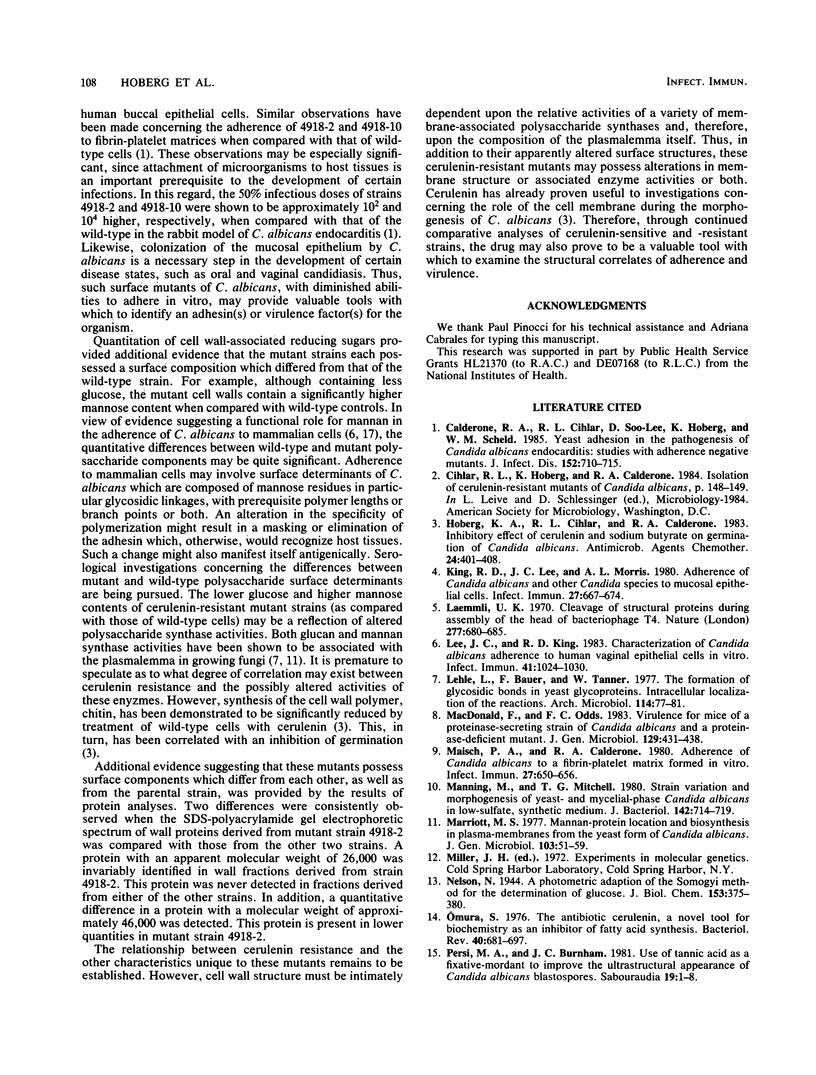
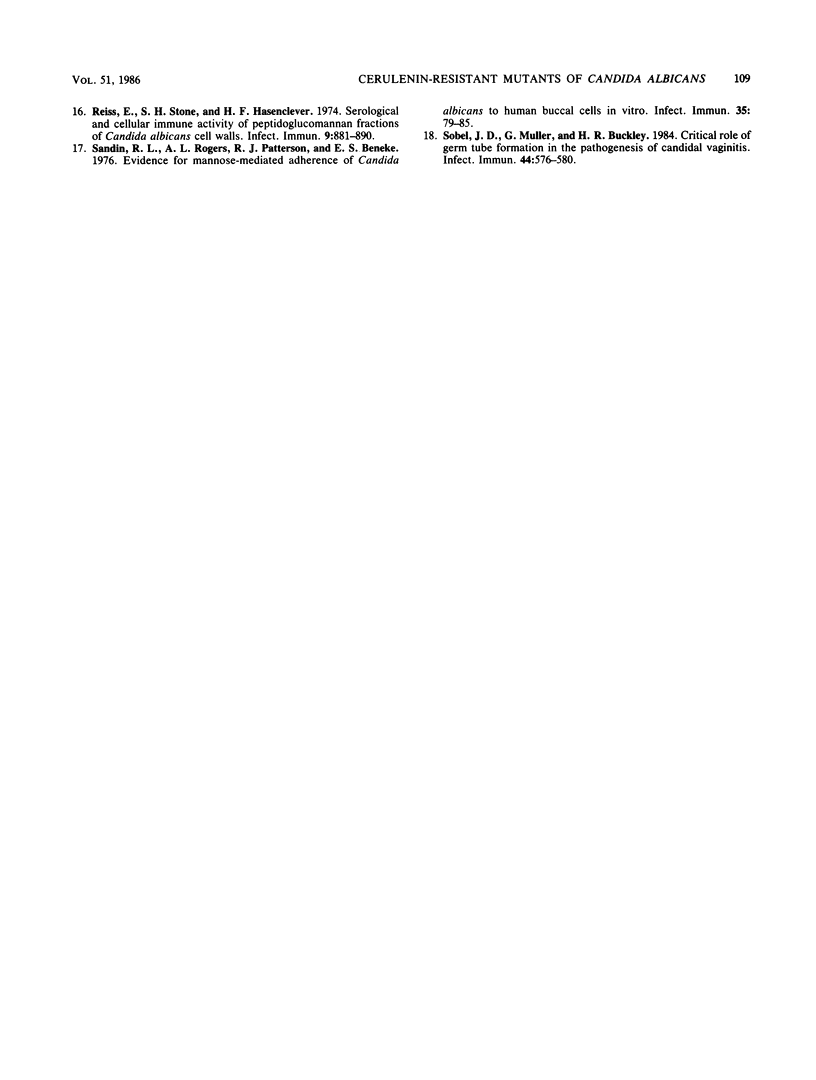
Images in this article
Selected References
These references are in PubMed. This may not be the complete list of references from this article.
- Calderone R. A., Cihlar R. L., Lee D. D., Hoberg K., Scheld W. M. Yeast adhesion in the pathogenesis of endocarditis due to Candida albicans: studies with adherence-negative mutants. J Infect Dis. 1985 Oct;152(4):710–715. doi: 10.1093/infdis/152.4.710. [DOI] [PubMed] [Google Scholar]
- Hoberg K. A., Cihlar R. L., Calderone R. A. Inhibitory effect of cerulenin and sodium butyrate on germination of Candida albicans. Antimicrob Agents Chemother. 1983 Sep;24(3):401–408. doi: 10.1128/aac.24.3.401. [DOI] [PMC free article] [PubMed] [Google Scholar]
- King R. D., Lee J. C., Morris A. L. Adherence of Candida albicans and other Candida species to mucosal epithelial cells. Infect Immun. 1980 Feb;27(2):667–674. doi: 10.1128/iai.27.2.667-674.1980. [DOI] [PMC free article] [PubMed] [Google Scholar]
- Laemmli U. K. Cleavage of structural proteins during the assembly of the head of bacteriophage T4. Nature. 1970 Aug 15;227(5259):680–685. doi: 10.1038/227680a0. [DOI] [PubMed] [Google Scholar]
- Lee J. C., King R. D. Characterization of Candida albicans adherence to human vaginal epithelial cells in vitro. Infect Immun. 1983 Sep;41(3):1024–1030. doi: 10.1128/iai.41.3.1024-1030.1983. [DOI] [PMC free article] [PubMed] [Google Scholar]
- Lehle L., Bauer F., Tanner W. The formation of glycosidic bonds in yeast glycoproteins. Intracellular localisation of the reactions. Arch Microbiol. 1977 Jul 26;114(1):77–81. doi: 10.1007/BF00429634. [DOI] [PubMed] [Google Scholar]
- Macdonald F., Odds F. C. Virulence for mice of a proteinase-secreting strain of Candida albicans and a proteinase-deficient mutant. J Gen Microbiol. 1983 Feb;129(2):431–438. doi: 10.1099/00221287-129-2-431. [DOI] [PubMed] [Google Scholar]
- Maisch P. A., Calderone R. A. Adherence of Candida albicans to a fibrin-platelet matrix formed in vitro. Infect Immun. 1980 Feb;27(2):650–656. doi: 10.1128/iai.27.2.650-656.1980. [DOI] [PMC free article] [PubMed] [Google Scholar]
- Manning M., Mitchell T. G. Strain variation and morphogenesis of yeast- and mycelial-phase Candida albicans in low-sulfate, synthetic medium. J Bacteriol. 1980 May;142(2):714–719. doi: 10.1128/jb.142.2.714-719.1980. [DOI] [PMC free article] [PubMed] [Google Scholar]
- Marriott M. S. Mannan-protein location and biosynthesis in plasma membranes from the yeast form of Candida albicans. J Gen Microbiol. 1977 Nov;103(1):51–59. doi: 10.1099/00221287-103-1-51. [DOI] [PubMed] [Google Scholar]
- Omura S. The antibiotic cerulenin, a novel tool for biochemistry as an inhibitor of fatty acid synthesis. Bacteriol Rev. 1976 Sep;40(3):681–697. doi: 10.1128/br.40.3.681-697.1976. [DOI] [PMC free article] [PubMed] [Google Scholar]
- Persi M. A., Burnham J. C. Use of tannic acid as a fixative-mordant to improve the ultrastructural appearance of Candida albicans blastospores. Sabouraudia. 1981 Mar;19(1):1–8. doi: 10.1080/00362178185380021. [DOI] [PubMed] [Google Scholar]
- Reiss E., Stone S. H., Hasenclever H. F. Serological and cellular immune activity of peptidoglucomannan fractions of Candida albicans cell walls. Infect Immun. 1974 May;9(5):881–890. doi: 10.1128/iai.9.5.881-890.1974. [DOI] [PMC free article] [PubMed] [Google Scholar]
- Sandin R. L., Rogers A. L., Patterson R. J., Beneke E. S. Evidence for mannose-mediated adherence of Candida albicans to human buccal cells in vitro. Infect Immun. 1982 Jan;35(1):79–85. doi: 10.1128/iai.35.1.79-85.1982. [DOI] [PMC free article] [PubMed] [Google Scholar]
- Sobel J. D., Muller G., Buckley H. R. Critical role of germ tube formation in the pathogenesis of candidal vaginitis. Infect Immun. 1984 Jun;44(3):576–580. doi: 10.1128/iai.44.3.576-580.1984. [DOI] [PMC free article] [PubMed] [Google Scholar]





